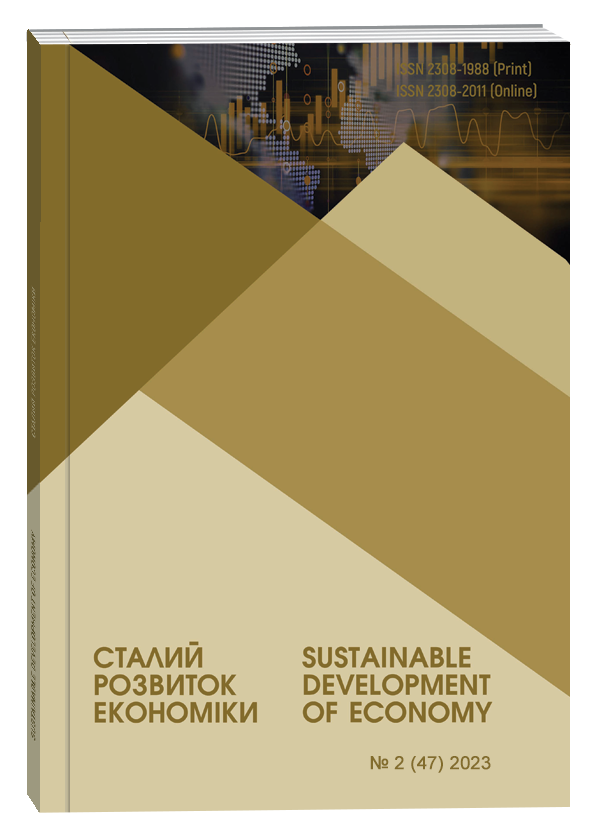CYBER FRAUD AS A THREAT TO THE SUSTAINABLE DEVELOPMENT OF THE HEALTH CARE SYSTEM: A SYSTEMATIC BIBLIOMETRIC ANALYSIS
Abstract
There is a growing wave of cyber fraud in the healthcare industry. Cases of breaches of confidentiality and security, leakage, theft and breach of medical confidential data, and fraudsters gaining access to machines and networks of medical institutions have become more frequent. The main purpose of the study is a retrospective and current systematic bibliometric analysis of scientific research in the field of cyber fraud as a threat to the sustainable development of the health care system based on Scopus, VOS Viewer, Statista. The relevance of solving this scientific problem lies in conducting not a traditional, but a comprehensive innovative systematic study of the industry, identifying priority dynamic, geographical and inter-sectoral links and directions, and problematic aspects. The research was carried out in the following logical sequence: determining the criteria for selecting publications on cyber fraud in the healthcare system; determining the dynamics of scientific articles in this area; analyzing the geographical distribution of research; studying the distribution of subject areas of the problem under study; forming and analyzing clusters of scientific articles on cyber fraud in the healthcare system by key terms; building an evolutionary and temporal map of the relationships of the studied categories with other scientific concepts in dynamics. Scopus platform, VOS Viewer software, Statista statistical database were used as analytical tools for the study. The study theoretically proves the existence of a close relationship between the health care system and cyber fraud. The results of the proposed model of a comprehensive systematic study of the healthcare industry will allow timely identification of priority areas and problematic aspects of the industry in terms of cybersecurity, will improve the protection of patients, patient data, hospital security management, strengthen the protection of medical devices, minimize the risks of cyber losses in the healthcare system, to organize sustainable development of the healthcare industry, to ensure good health of people.
References
Govindarajan, U., Singh, D., & Gohel, H. (2023). Forecasting cyber security threats landscape and associated technical trends in telehealth using bidirectional encoder representations from Transformers (Bert). Computers’; Security, 133, 103404. DOI: https://doi.org/10.1016/j.cose.2023.103404
IBM. (February 24, 2023). Distribution of cyber attacks across worldwide industries in 2022 [Graph]. In Statista. Retrieved October 10, 2023, from https://www.statista.com/statistics/1315805/cyber-attacks-top-industries-worldwide/
Kuzior A., Brożek P., Kuzmenko O., Yarovenko H., Vasilyeva T. (2022). Countering Cybercrime Risks in Financial Institutions: Forecasting Information Trends. Journal of Risk and Financial Management. 15(12):613. DOI: https://doi.org/10.3390/jrfm15120613
Kuzmenko, O., Kubálek, J., Bozhenko, V., Kushneryov, O., Vida, I. (2021). An approach to managing innovation to protect financial sector againstcybercrime. Polish Journal of Management Studies, 24(2), 276-291.133–138. DOI: https://doi.org/10.17512/pjms.2021.24.2.17
Orange. (December 1, 2022). Distribution of cyber attacks in healthcare industry worldwide from October 2021 to September 2022, by type [Graph]. In Statista. Retrieved October 09, 2023, from https://www.statista.com/statistics/1362863/cyber-attacks-on-healthcare-organizations-worldwide-by-type/
Pujitha, K., Nandini, G., Sree, K. V., Nandini, B., & Radhika, D. (2023). Cyber hacking breaches prediction and detection using machine learning. 2023 2nd International Conference on Vision Towards Emerging Trends in Communication and Networking Technologies (ViTECoN). DOI: https://doi.org/10.1109/vitecon58111.2023.10157462
Singh, H. J., Gupta, S., & Vyas, S. (2023). A prevention technique-based framework for securing healthcare data. Proceedings of Fourth International Conference on Computing, Communications, and Cyber-Security, 777–787. DOI: https://doi.org/10.1007/978-981-99-1479-1_57
Tadaka, S. M., & Tawalbeh, L. (2020). Applications of blockchain in healthcare, industry 4, and Cyber-Physical Systems. 2020 7th International Conference on Internet of Things: Systems, Management and Security (IOTSMS). DOI: https://doi.org/10.1109/iotsms52051.2020.9340215
Wagle, V., Kaur, K., Kamat, P., Patil, S., & Kotecha, K. (2021). Explainable AI for Multimodal Credibility Analysis: Case Study of Online Beauty Health (mis)-information. IEEE Access, 9, 127985–128022. DOI: https://doi.org/10.1109/access.2021.3111527
Yazdinejad, A., Rabieinejad, E., Hasani, T., & Srivastava, G. (2023). A Bert-based recommender system for secure blockchain-based Cyber Physical Drug Supply Chain Management. Cluster Computing. DOI: https://doi.org/10.1007/s10586-023-04088-6


